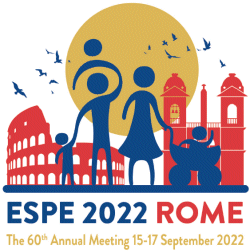
60th Annual ESPE (ESPE 2022)
Rome,
Italy
15 Sep 2022 - 17 Sep 2022
Free Communications
Diabetes and Insulin
hrp0095fc8.1 | Diabetes and Insulin | ESPE2022
Clinical effectiveness of Liraglutide 3.0 mg for weight management as an adjuvant therapy in obese adolescents with type 1 diabetes: A single-center pilot study
hrp0095fc8.2 | Diabetes and Insulin | ESPE2022
Detection of anti-islet antibodies in capillary blood by the antibody detection by agglutination-PCR (ADAP) technology is sensitive and suitable for general population screening programs
Oron Tal , de Jesus Cortez Felipe , Shtaif Biana , Robinson Peter V. , Yackobovitch-Gavan Michal , Seftel David , Phillip Moshe , Tsai Cheng-ting , Gat-Yablonsky Galia
hrp0095fc8.3 | Diabetes and Insulin | ESPE2022
Increased zinc alpha2-glycoprotein in patients with type 1 diabetes
Nourbakhsh Mitra , Nourbakhsh Mona , Golpour Pegah , Momeni Hosein , Razzaghy Azar Maryam
hrp0095fc8.4 | Diabetes and Insulin | ESPE2022
Unravelling environmental and genetic determinants of glycaemic control in children and young adults with Type 1 Diabetes
Robi Antonietta , Catamo Eulalia , Tinti Davide , Dovc Klemen , Tonno Raffaella Di , Barbi Egidio , Bonfanti Riccardo , Franceschi Roberto , Rabbone Ivana , Battelino Tadej , Tornese Gianluca
hrp0095fc8.5 | Diabetes and Insulin | ESPE2022
Pancreas Unfolded Protein Response is activated in Intrauterine Growth Restriction
Deodati Annalisa , Fausti Francesca , Pampanini Valentina , Cianfarani Stefano
hrp0095fc8.6 | Diabetes and Insulin | ESPE2022
Radio-guided surgery using 68Ga-labelled Exendin in patient with congenital hyperinsulinism
Prasad Vikas , Kühnen Peter , Rothe Karin , Hauptmann Kathrin , Boss Marti , Gotthardt Martin , Brenner Winfried , Beindorff Nicola , Blankenstein Oliver



